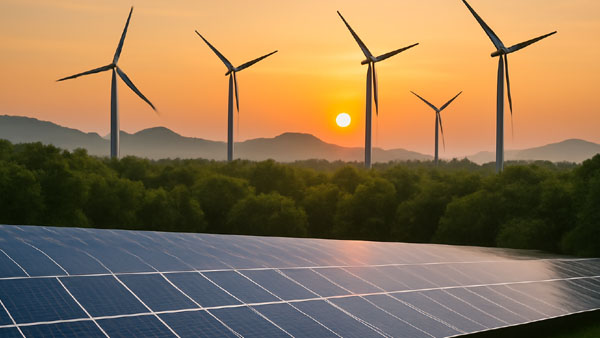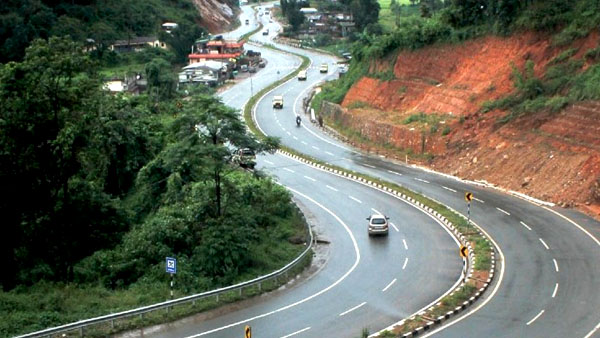How the country is meeting its Paris Agreement goals ahead of time
By Dipak Kurmi
India, a country often caught in the crosshairs of climate debates due to its size and population, is quietly emerging as a rare climate success story. Without making much noise, the country has either already met or is on the verge of achieving the three main climate targets it had committed under the 2015 Paris Agreement—well ahead of the 2030 deadline. This achievement becomes even more significant when one looks at the challenges faced by many developed nations who, despite their wealth and resources, are lagging behind on similar commitments.
A Major Milestone: 50% Electricity Capacity from Non-Fossil Sources
In one of the most prominent developments, India recently announced that over 50% of its installed electricity generation capacity now comes from non-fossil fuel sources. As of June 2025, India’s total installed capacity stood at 484.82 gigawatts (GW), out of which 242.78 GW is being contributed by sources such as large hydropower, nuclear power, and renewable energies like wind and solar. This achievement comes five years ahead of the target set for 2030 and is a major win in India’s climate journey.
This success was largely powered by the remarkable growth in renewable energy, particularly solar power, in the past few years. According to the Ministry of New and Renewable Energy, the year 2024-25 saw India adding a record 28,723.65 megawatts (MW) of renewable energy capacity, of which 23,832.87 MW came from solar energy alone. For comparison, the solar capacity added in 2014-15 was just 1,171.62 MW. This more than 20-fold increase over a decade highlights how quickly India’s clean energy ecosystem has evolved.
However, capacity does not equate to actual power generation. Renewable energy, especially solar and wind, is intermittent—it depends on the time of day, season, and climatic conditions. In practice, non-fossil fuel sources contributed to 28% of the actual electricity generated in May 2025. Also, it is important to understand that electricity accounts for only 22% of India’s total energy consumption. Most of the remaining energy comes from fossil fuels like coal, oil, and gas used in transportation, industry, and households. Therefore, in the broader picture, clean energy currently accounts for about 6% of India’s total energy consumption. Although this figure may appear modest, it aligns closely with the global average, reflecting steady progress.
Forests and Carbon Sinks: A Quiet but Massive Achievement
Another key target India committed under the Paris Agreement was the creation of an additional carbon sink of 2.5 to 3 billion tonnes of CO₂ equivalent by increasing forest and tree cover. According to official data submitted to the United Nations Framework Convention on Climate Change (UNFCCC), India had already created about 2.29 billion tonnes of additional sink by 2021.
Data from the India State of Forest Reports (ISFR) support this trend. Between 2015 and 2021, carbon stock in India’s forests grew significantly:
2015–2017: 44 million tonnes of carbon stock, equivalent to 161 million tonnes of CO₂.
2017–2019: 80 million tonnes of carbon stock, equivalent to 293 million tonnes of CO₂.
2019–2021: 81 million tonnes of carbon stock, equivalent to 297 million tonnes of CO₂.
This translates to an average increase of approximately 150 million tonnes of CO₂ equivalent per year between 2017 and 2021. If this trend continued through 2023, India would likely have surpassed the 2.5 billion tonne minimum target, thereby fulfilling this commitment ahead of schedule. The next ISFR report, expected later this year, will provide a clearer picture, but all indicators suggest that the forestry target has effectively been met.
Reducing Emission Intensity: On Track for 2030
The third commitment India made was to reduce its emissions intensity—that is, greenhouse gas emissions per unit of GDP—by at least 45% from 2005 levels by 2030. According to available data, India had already achieved a 36% reduction by 2020. While more recent data are not publicly available, the steady decoupling of economic growth from emissions suggests that the country is comfortably on track to meet, and possibly exceed, the 45% target well before 2030.
This progress is particularly significant because it indicates that India is managing to grow economically while limiting the growth of its emissions—a crucial element in the global fight against climate change. Moreover, it reflects structural improvements in energy efficiency, transportation, and industrial processes across sectors.
Global Context and Challenges
India’s performance stands in sharp contrast to many developed countries that continue to struggle to meet their climate targets. Several nations have not only fallen short in reducing emissions but have also failed to deliver on their promises of climate finance and technology transfer to developing countries—an important component of the Paris Agreement’s equity principle.
Despite having lower historical emissions and per capita emissions compared to the developed world, India has outperformed many in terms of actual delivery. And it has done so with minimal external support. India has repeatedly emphasized that it can do even more if provided with access to international climate finance and clean technology, which developed countries are obliged to share under the Paris Agreement.
Looking Ahead: 500 GW Non-Fossil Capacity by 2030
India’s next big climate goal is to install 500 GW of non-fossil fuel electricity capacity by 2030. While this is not a legally binding target under the Paris Agreement, it is part of India’s updated climate pledge and a crucial stepping stone toward decarbonizing its energy sector.
Achieving this will require sustained momentum in renewable energy expansion and significant contributions from nuclear power. India is currently building 10 new nuclear reactors, which are expected to double the country’s nuclear capacity to 17 GW by 2030. However, some technologies like the Bharat Small Modular Reactors may not be operational before the deadline. Hence, renewables will continue to play a dominant role in future capacity additions.
Final Thoughts
India’s journey toward meeting its climate commitments is not just about numbers—it reflects a larger shift in national priorities, planning, and policy execution. It underscores how a developing country, with immense developmental challenges, can balance economic growth with environmental responsibility.
The achievement of all three climate targets—non-fossil electricity capacity, forest carbon sink, and reduced emissions intensity—demonstrates that India is not just participating in global climate efforts but is actively leading by example.
Yet, this is just the beginning. For India to become a true global climate leader, it must now look beyond fulfilling commitments and start shaping the global discourse—especially in ensuring equity, access to green technology, and climate justice. But for now, the message is clear: India is doing its part, and doing it well.
(the writer can be reached at dipakkurmiglpltd@gmail.com)




